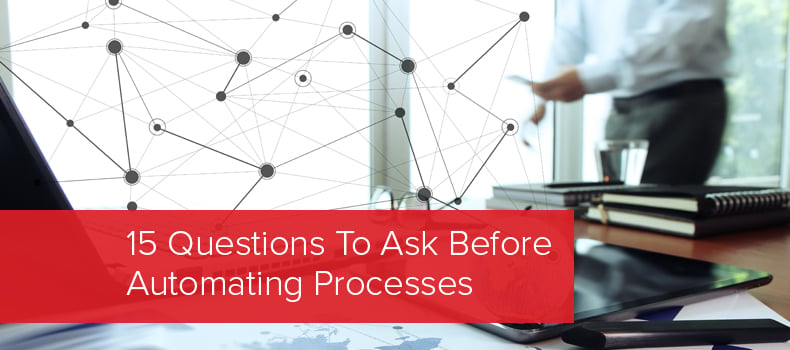Stay up to date with our latest news and insights
Supporting description on the types of content that feature in the blog.
19 August 2021

Process automation is becoming common-practice for many organisations that realise the potential for reducing human error, speeding up processes, and importantly, providing more time to employees to focus on higher-value tasks.
While it’s normal to start with repetitive and time-consuming tasks within the organisation, it’s good practice to look at what your organisation is trying to achieve by automating processes, essentially asking some key questions before getting started.

But first, let’s consider why you might automate business processes.
Process automation involves digitising any manual process in a way that centralises and compiles information within an organisation, from implementing a simple electronic filing system to streamlining workflows in a department.
Some of the key benefits of process automation include:
All of these benefits can be achieved in any department of your organisation. Every department has processes that would ultimately impact business efficiency, UX and CX.
While it will vary from business to business, a good place to start with process automation is to assess all of your processes that heavily involve documents (and particularly printed documents). Whether it’s printing processes and trends or monthly invoice processing, document heavy processes can involve a lot of inefficiencies and a load of manual tasks.
By identifying processes that are repetitive, time-consuming, have high-rates of human error or heavily involve creating, analysing or interpreting documents, you can create a roadmap and plan for process automation.
Once you’ve identified the processes ripe for automation, you’ll need to map each process to see each key step. This is where you need to start asking yourself questions about how the process runs and what systems and steps are in place.
The following questions and the answers you give can help you plan a strategy for process automation. Ask these questions for each process you’re considering.
Research shows that more than 50% of Robotic Process Automation projects fail to grow beyond 10 bots and more than 70% of RPA projects plateau at fewer than 50 bots.
To get process automation right, it’s important to ask the questions above for any process you’re looking to automate, and it’s absolutely key that you identify and start with processes that provide business value.
At Xenith, we always recommend starting with an assessment to help identify the processes within your organisation that are a good fit for automation, and importantly will provide business value and more opportunities for success.
This blog is based on a blog we published in September 2016, which can be seen here.
Supporting description on the types of content that feature in the blog.

20-09-2024
Digital document management tools offer a range of compelling benefits for businesses, including a PDF editor, a file converter and a form generator. You can also integrate with digital signatures qui...

20-09-2024
When choosing a SaaS software to deal with your company’s PDF documents and enable forms to be digitally sent and signed, you’ll want a product that’s user-friendly and easy to use. With Tungsten’s Po...

11-07-2024
Belkin is a global technology company that provides high-quality electronics products, from wireless chargers to power banks. Their people-centric approach and best-in-class functionality have positio...